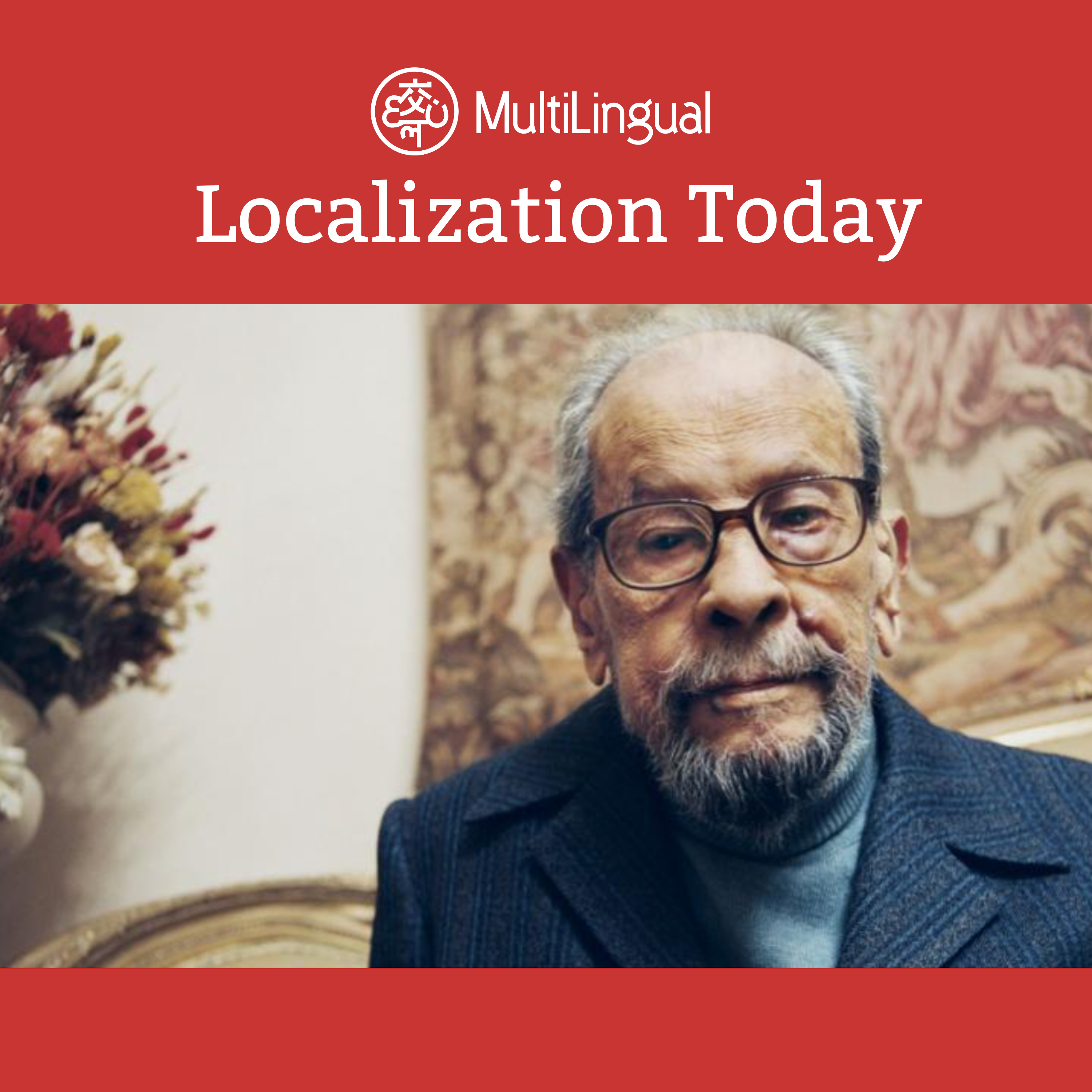Episode Transcript
[00:00:00] A User Experience Approach to Tone of Voice adaptation how NDrive improved its Spanish Localization by Jana Kolesnikova when creating a product with a single tone of voice in English, it's easy to assume that a direct translation will work for every market.
[00:00:18] However, people in different countries have distinct communication preferences, and adapting the tone of voice is often necessary for a more natural and engaging user experience. UX At Endrive, our product team began exploring this challenge after recurring issues in Spanish language Linguistic quality assurance LQA evaluations, particularly around tone messaging that felt conversational or friendly in English, often came across as stiff, overly formal or off brand in Spanish.
[00:00:49] We set out to understand why and how to improve it. We started by reviewing academic and cultural research on communication preferences in Latin America and Spain.
[00:00:59] We also analyzed apps developed by Spanish speaking creators, assuming their Original user interface's UIs were designed with local audiences in mind.
[00:01:10] Next, we conducted research among our Spanish speaking users to identify their expectations regarding tone, formality, and overall messaging style. Through this process, we gained valuable insights into how different regions within Latin America and Spain respond to various tones of voices.
[00:01:28] By aligning our Spanish communication with these preferences, we aim to refine our tone of voice and style guidelines for linguists, grounding them in both user behavior and cultural context to create an experience that feels authentic and accessible.
[00:01:43] Analyzing Leading Apps Our analysis of various apps created by developers from Latin America and Spain included reviewing websites, subscribing to email communications, and studying push notifications, UI elements, and customer support templates.
[00:02:01] This approach helped us capture the full spectrum of user interactions.
[00:02:06] To extract and analyze text from screenshots, we used an optical character recognition OCR tool and collaborated with Spanish speaking linguists for a detailed assessment.
[00:02:17] Rapi Rapi is a Latin American super app offering services such as food delivery, groceries, electronics, and financial services.
[00:02:27] Rapi's communication strategy varies by touchpoint Website Informal and direct using imperative verbs for a friendly experience Push notifications Highly visual with emojis to enhance excitement Support content Empathetic and reassuring App UI Engaging and action driven, often using exclamation marks Cabify Cabify a ride hailing app active in Spain and Latin America, adapts its tone depending on context.
[00:03:02] Website Formal and professional, emphasizing trust and safety Emails More informal, friendly and engaging Clear, structured and supportive App UI simple and direct balancing clarity with informality Despegar, a major online travel agency in Latin America, emphasizes clarity and engagement with a warm conversational tone that fosters accessibility across communication channels. Dayspegar maintains a consistent, friendly tone Emails welcoming and informal support Content informative and supportive app ui, casual and accessible.
[00:03:51] Analysis Findings Our analysis of these applications revealed clear patterns in the tone preferences of Spanish speaking users.
[00:04:00] Friendly and natural communication using informal language helps users feel comfortable.
[00:04:06] Clarity and directness aid usability, empathy, and reassurance, build trust and improve support interactions.
[00:04:14] Gathering User Feedback these insights from leading apps helped us shape the hypotheses we wanted to test and the questions we asked our audience to validate them and refine our tone of voice. We created 12 in app mockups in collaboration with our UX writing team, with each message varying across specific tone attributes.
[00:04:38] Formal, casual or overly friendly Respect respectful, familiar or brash Emotional involvement detached, caring or patronizing Directness deceitful straightforward or blunt human touch robotic human or excessively informal Brand accessibility Upscale, mainstream or inclusive messages were localized into regional variations of Spanish by professional linguists.
[00:05:09] Together with our UX Research department, we designed a structured survey and gathered user feedback through both closed and open ended questions. The survey began with a brief localized welcome message followed by a tone evaluation task.
[00:05:25] Participants were shown as single, randomly selected message variant to avoid bias as side by side comparisons could encourage users to pick the least bad option rather than evaluate tone independently.
[00:05:38] Respondents were then asked to select tone attributes they felt applied to the message such as formal, casual, patronizing, or clear.
[00:05:46] Then they rated the message on a five point scale for clarity and relatability.
[00:05:52] Finally, they were invited to explain their reactions, note anything they found off putting, and suggest improvements in free text responses.
[00:06:00] The survey was localized for each testing region and reviewed by native linguists to ensure clarity and cultural appropriateness.
[00:06:09] Survey Findings the survey helped us assess emotional reactions to tone, evaluate clarity, engagement, and relatability, measure perceived trustworthiness and brand fit, and gather suggestions for tone improvements.
[00:06:25] We discovered that clarity and directness were the most clearly recognized and appreciated aspects. More than 60% of participants gave the highest clarity ratings to the message variants we designed to be the most straightforward in open ended feedback. Clarity was also the most frequently mentioned theme cited by nearly a third of participants.
[00:06:46] Simplicity and directness were also mentioned frequently reinforcing the importance of concise and easy to follow messaging.
[00:06:54] Users expressed a clear preference for informal yet respectful language.
[00:06:58] Approximately 15% of participants highlighted the importance of natural relatable phrasing.
[00:07:05] Warm and friendly messages increased engagement overall, though some users, particularly in Colombia and Peru, flagged excessive informality as unprofessional, highlighting the need to strike a careful balance depending on the region and context.
[00:07:20] Emotional tone played a critical role in trust and user satisfaction.
[00:07:25] Empathy 18% and respectfulness 17% were among the most cited qualities that made users feel supported and understood.
[00:07:33] Respondents emphasized that messages should feel human, helpful and considerate, especially in service related communication.
[00:07:41] Implementing Changes Based on these survey findings, we revised our tone of voice and style guides to better reflect user expectations and regional communication norms.
[00:07:53] We removed English specific tone attributes, emphasized clarity, warmth and support, and refined guidance for each type of communication, including updating our do don't examples for Spanish speaking linguists.
[00:08:08] We asked our linguists to adopt the updated tone across all Spanish translations. Moving forward, we also began reworking UI copy and support templates to match the updated tone, ensuring a consistent voice across all user facing content.
[00:08:24] In three subsequent rounds of lqa, we observed no tone related issues.
[00:08:29] It is a strong indicator that our updated tone strategy resonates with users and meets product quality expectations.
[00:08:37] Acknowledgments this project was made possible by UX researcher Edward Galev, who co developed the survey structure and testing process, as well as UX writers Anastasia Uroszko and Alejandra Pantoha Guerrero, who created the original English tone of voice and contributed to final refinements in Spanish.
[00:08:57] I'm deeply grateful for their expertise and collaboration.
[00:09:02] This article was written by Yana Kolesnikova. She is a localization manager at YANGO with previous experience at Indrive and Kaspersky Lab. She specializes in building localization workflows, integrating machine translation, and driving LQA processes.
[00:09:20] She enjoys mentoring through Women in Localization.
[00:09:24] Originally published on multilingual magazine issue 243, August 2025.


